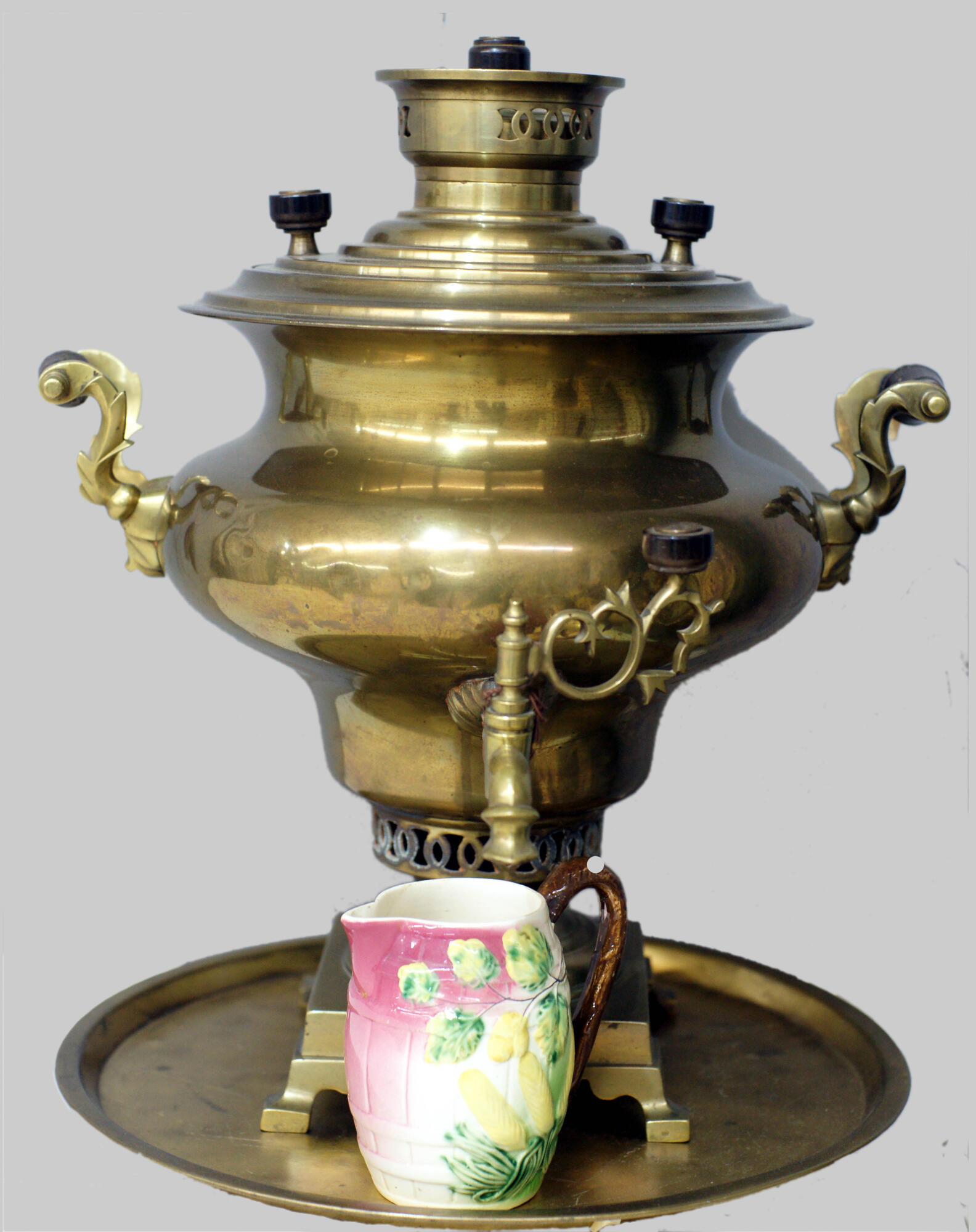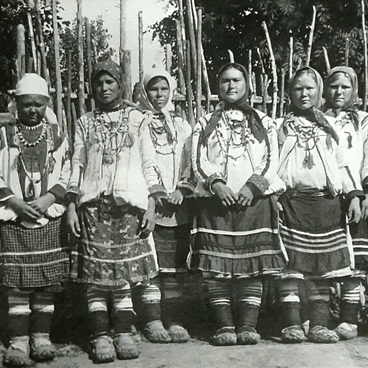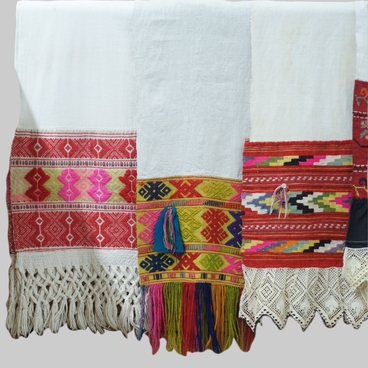The samovar displayed in the museum exhibition was manufactured at the Tula-based Teile factory in the early 20th century. This coal-fueled samovar is a device for boiling water. It is made from yellow-colored metal. Its construction comprises a tank, a base, a tap, a burner, and a lid. The base of the samovar is square and firmly stood on its four legs.
The tank is shaped like a ‘smooth turnip’: it’s middle section is “inflated”, and it tapers down at the top and on the bottom. The tank in all similarly shaped samovars is covered with a lid with two handles. Inside the samovar there is a cylindrical pipe where the hot coals are placed; on top it is closed with a cap with a wooden top and a burner with ornate holes.
This samovar was purchased at a bazaar in Izhevsk in the 1920s and stayed in town ever since. It used to belong to A.V. Syurgaeva. It was actively used until the 1950s.
The legend says that Peter the Great introduced samovars to Russia. According to that legend, he brought one of these novel and innovative devices over from Holland. There is, however, an alternative version of the samovar origin story. It attributes the creation of samovar to the entrepreneur Demidov and the Ural factories, and not the Tula craftsmen.
Having gone on a trip to the Urals in 1701, the industrialist Demidov, together with skilled copper craftsmen, laid the foundation for the samovar dynasty. The other version states that first samovars were manufactured by Lisitsin brothers on Shtykovaya Street in Tula in 1778.
The samovar displayed in the museum exhibition was manufactured on the Teile factory. The factory was founded in 1870, and by 1879 a petition was submitted to the Department of Trade and Manufactures for the approval of the brand stamped seal.
Teile not only opened a new factory in Tula, but also supplied it with advanced equipment - two steam engines. In just 9 years, a large-scale production was fully operational and netting an income of 75 thousand rubles. The main feature of the Teile factory products was a kerosene burner which they introduced to the samovar construction. This type of fuel allowed to boil the water fast, and kerosene-fueled samovars became quite popular.
They were bought mostly by wealthy people, since kerosene was prohibitively expensive for the mass market. To increase sales, the factory also manufactured the usual coal- or wood-fueled “water heaters”, as well as gift samovars with trays, and elegant coffee pots. The entire Teile family, including the industrialist’s wife and three sons, worked on the creation of unique samovars. The factory was nationalized in 1919.
The tank is shaped like a ‘smooth turnip’: it’s middle section is “inflated”, and it tapers down at the top and on the bottom. The tank in all similarly shaped samovars is covered with a lid with two handles. Inside the samovar there is a cylindrical pipe where the hot coals are placed; on top it is closed with a cap with a wooden top and a burner with ornate holes.
This samovar was purchased at a bazaar in Izhevsk in the 1920s and stayed in town ever since. It used to belong to A.V. Syurgaeva. It was actively used until the 1950s.
The legend says that Peter the Great introduced samovars to Russia. According to that legend, he brought one of these novel and innovative devices over from Holland. There is, however, an alternative version of the samovar origin story. It attributes the creation of samovar to the entrepreneur Demidov and the Ural factories, and not the Tula craftsmen.
Having gone on a trip to the Urals in 1701, the industrialist Demidov, together with skilled copper craftsmen, laid the foundation for the samovar dynasty. The other version states that first samovars were manufactured by Lisitsin brothers on Shtykovaya Street in Tula in 1778.
The samovar displayed in the museum exhibition was manufactured on the Teile factory. The factory was founded in 1870, and by 1879 a petition was submitted to the Department of Trade and Manufactures for the approval of the brand stamped seal.
Teile not only opened a new factory in Tula, but also supplied it with advanced equipment - two steam engines. In just 9 years, a large-scale production was fully operational and netting an income of 75 thousand rubles. The main feature of the Teile factory products was a kerosene burner which they introduced to the samovar construction. This type of fuel allowed to boil the water fast, and kerosene-fueled samovars became quite popular.
They were bought mostly by wealthy people, since kerosene was prohibitively expensive for the mass market. To increase sales, the factory also manufactured the usual coal- or wood-fueled “water heaters”, as well as gift samovars with trays, and elegant coffee pots. The entire Teile family, including the industrialist’s wife and three sons, worked on the creation of unique samovars. The factory was nationalized in 1919.



